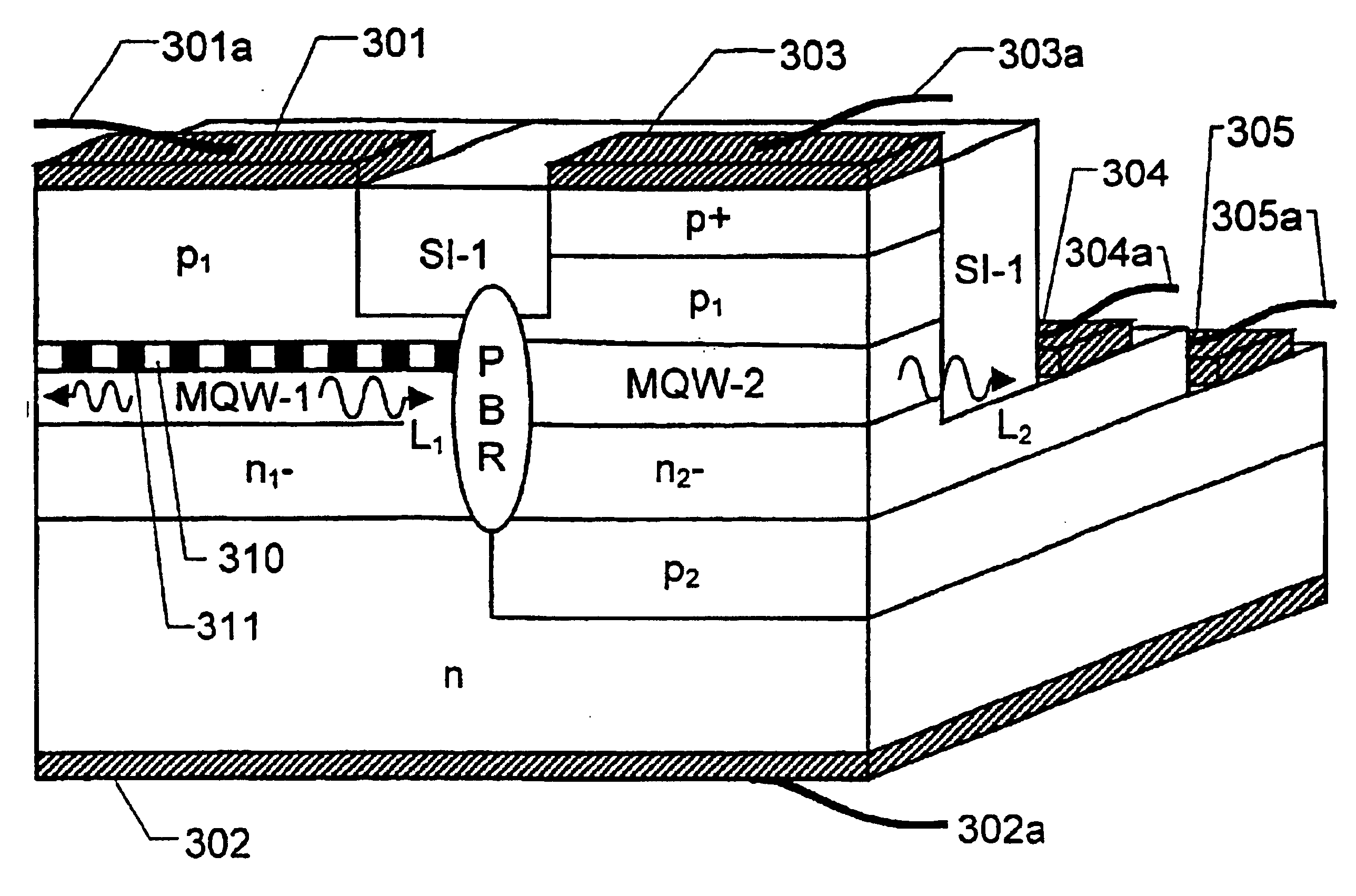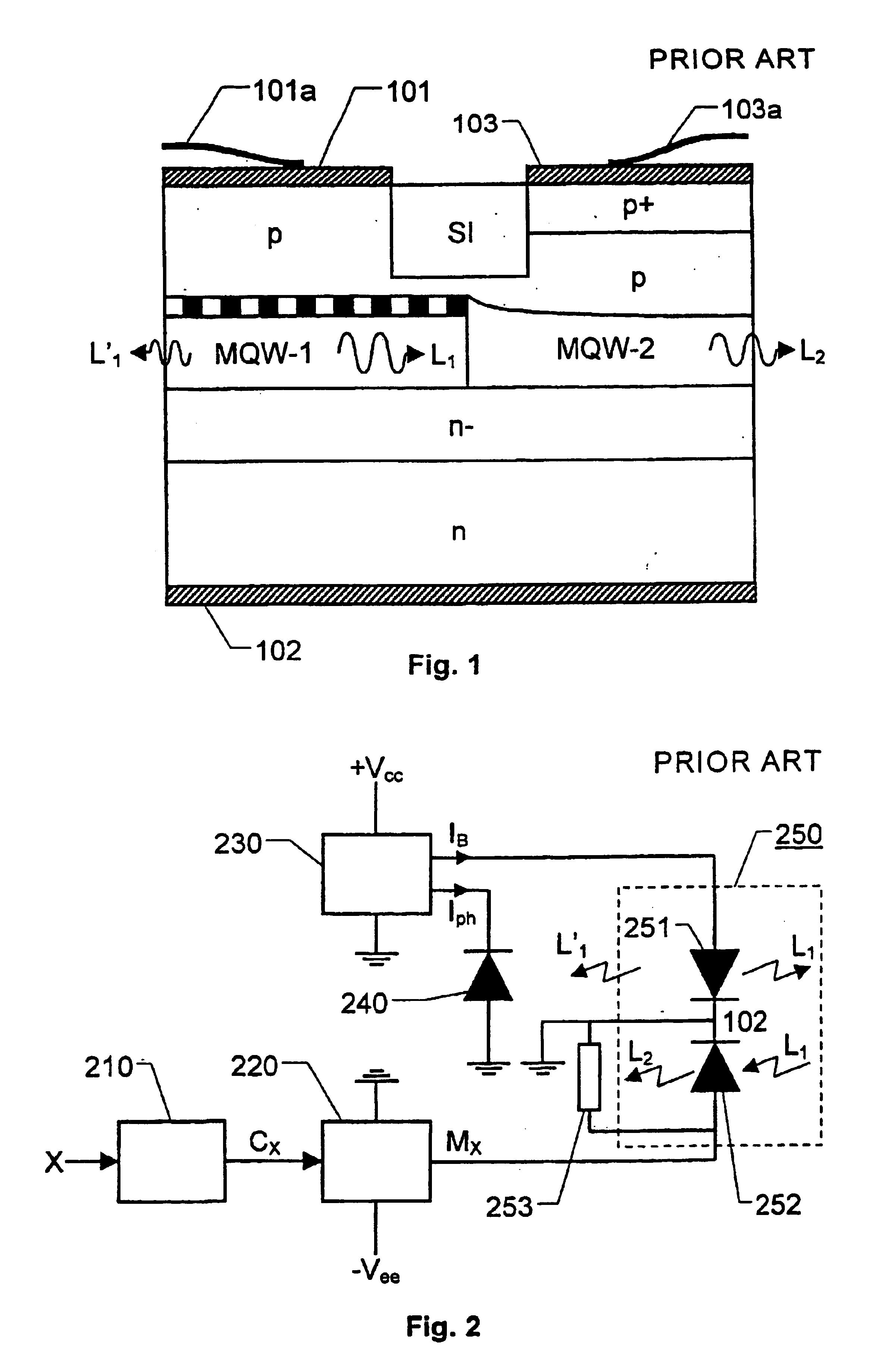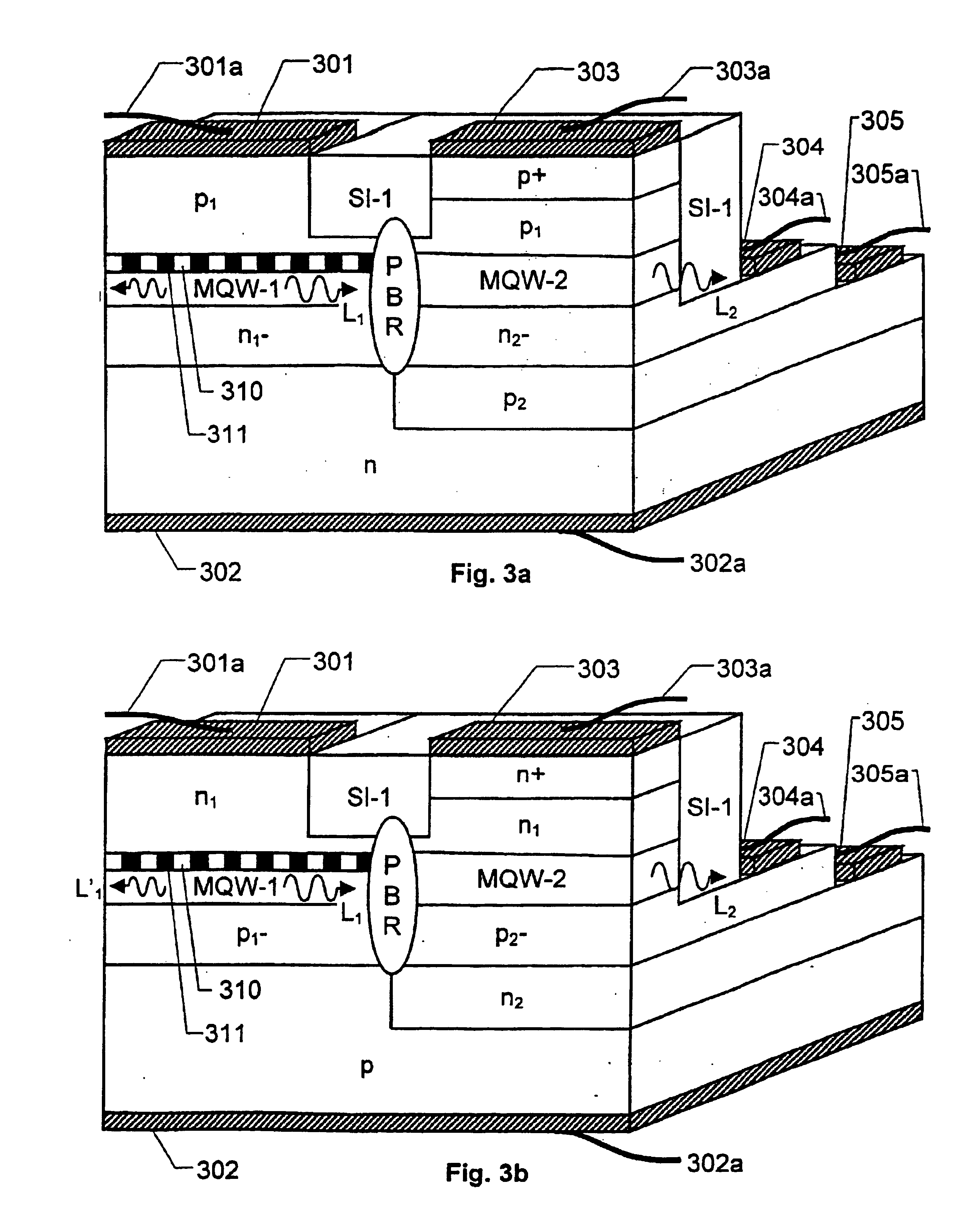Laser modulator
a laser modulator and light signal technology, applied in the direction of laser details, semiconductor lasers, electrical apparatus, etc., can solve the problems of increasing the severity of dispersion problems, shifting the wavelength of primary flight signals, and reducing the efficiency of lasers, so as to achieve high efficiency and flexibility, reduce the effect of power consumption and small siz
- Summary
- Abstract
- Description
- Claims
- Application Information
AI Technical Summary
Benefits of technology
Problems solved by technology
Method used
Image
Examples
first embodiment
FIG. 3a shows an integrated laser-modulator structure according to a first alternative of the invention. A laser section here contains a separate anode area of a positive doping polarity p1 (e.g. InP), which is accessible via a first anode contact 301 and a first anode lead 301a. Correspondingly, the modulator section contains another separate anode area p+ (e.g. InGaAs), also of positive doping polarity, which is accessible via a second anode contact 303 and a second anode lead 303a. A semi-insulating region (i.e. un-doped area) SI-1 (e.g. InP) separates the laser anode area p1 from the modulator anode area p+. A sub-layer p1 of the anode area p+ in the modulator section 252, extends below the first un-doped area SI-1 and contacts the laser anode area pi.
The laser section has a two-layered cathode area containing a first layer n1− (e.g. InP) of negative doping polarity and a substrate n (e.g. InP), also of negative doping polarity. The modulator section has a corresponding cathode ...
second embodiment
FIG. 5b shows a block diagram over a proposed optical transmitter, which includes a laser unit 450 according to the invention. This embodiment is especially adapted for producing a relatively low-frequency outgoing modulated light signal L2 (i.e. with a comparatively low lower cut-off frequency). All units and components bearing the same identifiers as used in FIG. 5a here have the same functions as described above with reference to this figure. However, a second resistor 423 and a second capacitor 424 are added in order to provide a sufficient termination of the higher frequencies. For the same reason, a third capacitor 428 has been added between the second resistor 427 and the ground potential. Furthermore, both the second capacitor 424 and the third capacitor 428 are connected to the modulator driver 420. The extra capacitors 424 and 428 are necessary because there is a physical limit as to the highest possible value for the first capacitor 422 (and as a consequence thereof a low...
PUM
 Login to View More
Login to View More Abstract
Description
Claims
Application Information
 Login to View More
Login to View More - R&D
- Intellectual Property
- Life Sciences
- Materials
- Tech Scout
- Unparalleled Data Quality
- Higher Quality Content
- 60% Fewer Hallucinations
Browse by: Latest US Patents, China's latest patents, Technical Efficacy Thesaurus, Application Domain, Technology Topic, Popular Technical Reports.
© 2025 PatSnap. All rights reserved.Legal|Privacy policy|Modern Slavery Act Transparency Statement|Sitemap|About US| Contact US: help@patsnap.com



